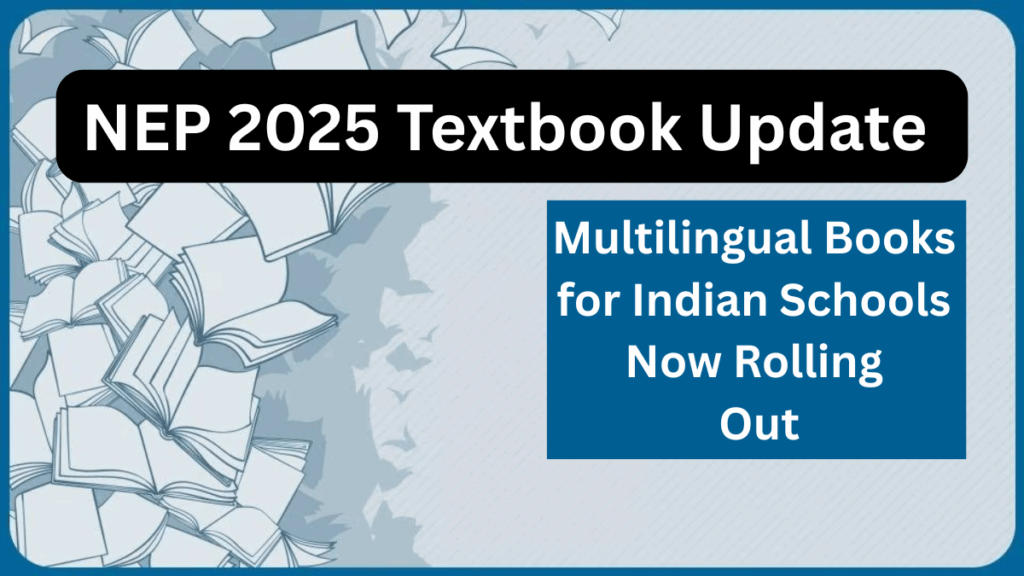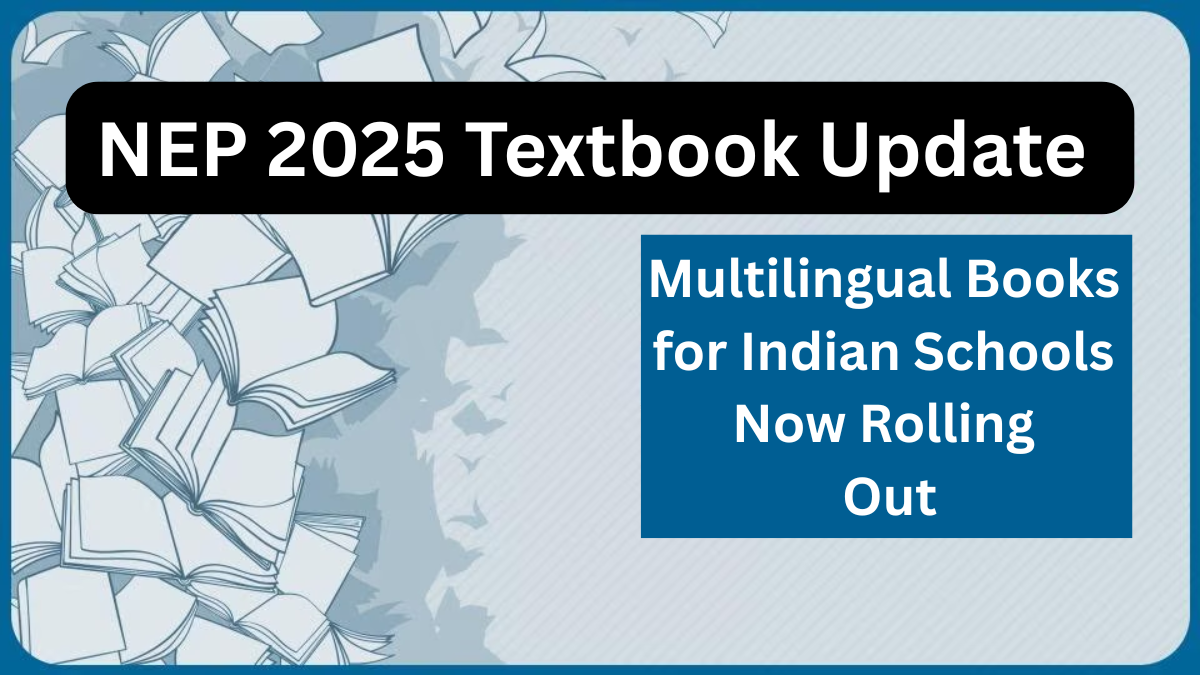India’s education system is entering a transformative era, and it’s all thanks to the National Education Policy (NEP) 2025. In a massive step forward, NEP 2025 school books are now being made available in multiple Indian languages, making learning more inclusive, accessible, and rooted in regional diversity.
Let’s break down what’s changing and how it benefits students and schools.

What’s New in NEP 2025 School Books?
The multilingual textbook rollout is part of a broader push to implement the NEP 2025 vision across classrooms in India.
Key Highlights
-
Textbooks now available in 22 regional languages
-
Curriculum aligned with NEP 2025 learning outcomes
-
Child-centric, activity-based content
-
Targeted for Classes 1 to 10 in Phase 1
-
Emphasis on mother-tongue or regional language instruction
Languages Covered in the First Phase
The table below lists some of the languages included in the multilingual textbook rollout under NEP 2025:
| Language | Regions/States Benefiting | Status |
|---|---|---|
| Hindi | Most of North and Central India | Rolled Out |
| Tamil | Tamil Nadu | Rolled Out |
| Telugu | Andhra Pradesh, Telangana | Rolled Out |
| Bengali | West Bengal | Rolled Out |
| Kannada | Karnataka | Rolled Out |
| Marathi | Maharashtra | Rolled Out |
| Odia | Odisha | Rolled Out |
| Urdu | Pan-India (minority schools) | Rolling Out |
| Assamese | Assam | Rolling Out |
| Gujarati | Gujarat | Rolling Out |
Benefits of the Multilingual Textbook Rollout
Implementing NEP 2025 school books in multiple languages brings major advantages.
For Students
-
Learn in the language they understand best
-
Increased classroom participation and comprehension
-
Boosts confidence and cultural identity
For Teachers
-
Easier to connect with students in their native language
-
Better implementation of localized examples
-
Customizable teaching aids aligned with the syllabus
For Schools
-
Encourages inclusive learning environments
-
Reduces dropout rates due to language barriers
-
Equips rural and semi-urban schools with better tools
When Will All Schools Get the New Books?
The rollout is being done in phases, starting with government schools and moving gradually to private and semi-private institutions.
Implementation Timeline
-
2025 (Phase 1): Classes 1–10 in state board schools
-
2026 (Phase 2): Senior secondary level (11–12) + CBSE/ICSE schools
-
By 2027: Nationwide coverage across all educational boards
Challenges Being Addressed
While the initiative is promising, it comes with its fair share of hurdles:
-
Translation accuracy: Ensuring regional textbooks retain the core message and quality
-
Teacher training: Prepping educators for multilingual instruction
-
Infrastructure: Ensuring timely distribution of books to all states
The government is working with NCERT, SCERTs, and local publishers to overcome these issues swiftly.
FAQs
Q1. What is the purpose behind the multilingual textbook rollout?
A: The goal is to make learning more inclusive and effective by teaching students in their mother tongue, as envisioned in NEP 2025.
Q2. Will CBSE and ICSE schools also adopt NEP 2025 school books?
A: Yes, but the rollout in central boards will happen in later phases, likely by 2026.
Q3. Are private schools also required to use these new books?
A: Not immediately, but over time, the policy encourages all schools to adopt the updated, NEP-aligned textbooks.
Q4. Can parents access these books online?
A: Yes, the digital versions of NEP 2025 school books will be made available through government portals like DIKSHA and NCERT’s website.
Final Thoughts
The NEP 2025 school books initiative is more than just a change in curriculum—it’s a cultural and educational shift aimed at empowering students across India. The multilingual textbook rollout ensures that no child is left behind just because of a language barrier. With continued support, this ambitious step is set to redefine the future of Indian education.
Click here to learn more
